How we Achieved SEO Success for One of the UK’s Leading Driving Schools

1,150 keywords ranking top 3
+173% YoY
3,680 keywords ranking top 10
+63% YoY
+280,000 organic sessions
+67% YoY
Published on 06 Nov, 2023 Standout stats.
1,150 keywords ranking in top 3 positions.
3,680 keywords ranking in top 10 positions.
67% YoY increase in sitewide organic sessions.
290% YoY increase in organic leads for driving instructor training courses.
308% YoY increase in organic sessions to the site's blog.
150% YoY increase in organic leads for intensive driving courses.

Learn how we took Bill Plant Driving Schools’ organic conversions to a new all-time high, generating a YoY uplift of thousands of enquiries and bookings for driving lessons and instructor training courses.
In this SEO case study, we’ll dive deep into the strategy we rolled out and the specific tactics that contributed to the success we’ve seen over a two-year period.
And it’s one of those case studies that highlights the realities of SEO; that rapid overnight growth is rarely the norm, rather, ongoing investment into a solid strategy that’s executed correctly is what delivers long-term success, as well as the fact that the true measure of organic impact is the conversions that are driven.
The Client.
Bill Plant Driving School is one of the UK’s leading driving school franchises, with hundreds of instructors nationwide alongside a well-established instructor training programme.
Voted National Driving School of the Year and Training Provider of the Year 2023, Bill Plant has a long-standing reputation helping Brits to get behind the wheel or kickstart their career as driving instructors, and the franchise appointed Digitaloft as their SEO agency partner in 2021 to accelerate their organic success during a key period of growth.
The Brief.
Upon being engaged by the franchise in Q4 2021, Digitaloft was tasked with delivering a step-up in lesson bookings and instructor training enquiries once the market had returned to some sort of normality after the pandemic.
As lessons and tests resumed and the lockdown backlog began to clear, the agency was given the goal of increasing the franchise’s market share against key competitors and generating an uplift in bookings and leads across the franchise’s local network of instructors, generating enquiries from learners of all types looking to start driving lessons alongside a number of key offerings:
- Driving instructor training courses
- Automatic driving lessons
- Driving lessons with female instructors
- Intensive driving courses
These were identified as key growth opportunities during onboarding and formed part of a phased roadmap, put forward as viable ways to create the step-up in organic performance the franchise needed to see over the course of 2022 and beyond.
When Digitaloft began working with Bill Plant Driving School in Q4 2021, the franchise had seen a period of decline in overall organic visibility from its previous peak, seen in early 2017, following the acquisition of the franchise by the current owners and a new website.

The agency onboarded Bill Plant Driving School at a time when the site’s organic traffic was at one of its lowest levels since 2013, and the franchise needed its organic visibility to match its industry reputation and network of instructors.
The Strategy.
When Digitaloft began working with Bill Plant Driving School, the mission we had on our hands was to turn around the organic visibility of a site that had seen this decline and then plateau over more than three years.
And when working on projects like this, the most important place to start is with a strategy that helps to define what needs to be done and why.
It’s that why that’s missing in the early days of so many SEO projects.
Being able to justify why a tactic has been recommended, and how it’s expected to contribute towards the project’s goals allows you to effectively prioritise your approach, and ensure you’re working on things that are actually contributing towards success.
You see, there’s too much ‘box ticking’ that happens in SEO. Doing things that don’t really have much impact on the site’s overall organic performance, but are done because they’re considered to be ‘best practice.’
But don’t get us wrong. Most of these best practices have their place, we just need to understand that a recommendation that’s critical to implement ASAP for one site may be completely irrelevant to another.
It’s all about context, and being able to explain where you’re heading and how you’re going to get there.
Ultimately, our strategy was to increase the driving school’s organic revenue (bookings and leads) as a result of a larger market share against key competitors, especially in high-priority localities and for driving instructor training courses.
And on that note, here’s a breakdown of some of the key tactics that contributed to this project’s success, alongside that all-important why for each.
These are the things we did that had the biggest impact on meeting our goals.
Improving Priority Location Pages
Local rankings (e.g. ‘driving lessons Birmingham’ or ‘driving instructors Birmingham’) are the backbone of Bill Plant’s SEO success, and we needed to both generate a step up in leads for instructors and maintain visibility to attract new franchisees.
One of our first tasks on this project was to work with the client’s team to prioritise the location pages that were in place. We needed to understand which were the most important to the business based on:
- Search volume
- Capacity of local instructors
- Local competition
By prioritising location pages using more than just search volume data, we had the information we needed to look at those areas deemed the most valuable to the business.
Using search volume alone wouldn’t have given us insight into the franchise’s instructor capacity within a reasonable radius, nor the number of other driving schools in the area competing for bookings from the same learners.
Make strategic decisions on multiple data points that go beyond search volume wherever possible.
These locations were our High Priority grouping. And we set about to make improvements to these to see an increase both in traffic and conversions.
Across our High Priority locations, later moving on to Medium Priority ones, we:
- Reworked the page template to offer a better user experience.
- Merged suburbs that previously had their own pages into a parent location.
- Migrated suburbs that justified their own location page into a silo structure (e.g. /leeds/wetherby/).
- Improved page content to offer a more targeted experience for people in that location. This meant adding things like local test centre information and pass rates, as well as FAQs relating to that location.
- Improved internal linking to these High Priority locations, ensuring they were the ones being linked to from key pages, as well as linking between parent and child locations.
Our goal was to have engaging location pages that were considered genuinely helpful by learners looking to book lessons in the area.
But there’s only so much we could do on the main page whilst maintaining a great user experience, which is why we created supporting content to supplement location pages.
We teamed up with driving instructors in High Priority locations to put together content such as:
- Practical Driving Test Centres In Leeds: Where Can You Take Your Test?
- Driving Theory Test Centres In Leeds: Where Can You Take Your Test?
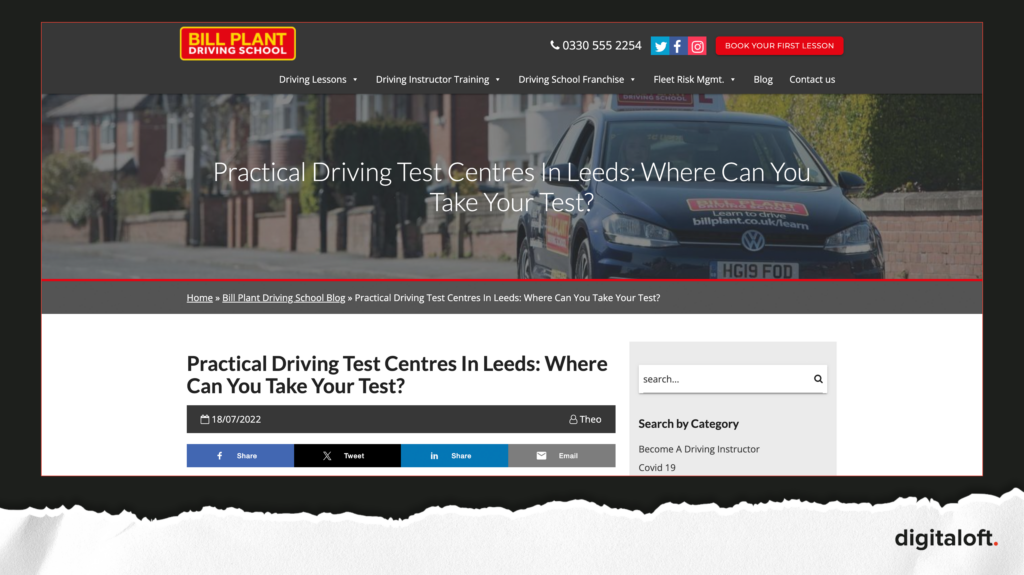
This helped us to build authority and publish helpful content that’s unique to each location, going above and beyond what competitors were doing.
The takeaway here is that even if your pages rank well now (as many of these location pages did), SEO is as much about maintaining these as it is about growing the visibility of lower-ranked ones. And by working to improve on what already worked, we set our sights on delivering a strategy that we’re confident will deliver results over the long term, too.
Closing the Keyword Gap with New Service Pages
Keyword research helped us discover a wealth of both commercial-intent and informational-intent queries that the site just wasn’t targeting when we began working together.
In so many cases, what a keyword gap analysis uncovers is a list of queries that can feed straight into a content calendar, because the reason they’re not ranking is that there’s no relevant content on the site.
Here, we broke our ‘untapped’ keywords list into two groups, commercial and informational. You’ll learn how we integrated informational keywords into our strategy soon.
Example queries from the commercial-intent group included:
- Driving lessons with female instructors (commercial intent)
- Automatic driving lessons (commercial intent)
Our priority was for our content team to produce engaging, helpful content for a series of pages, including:
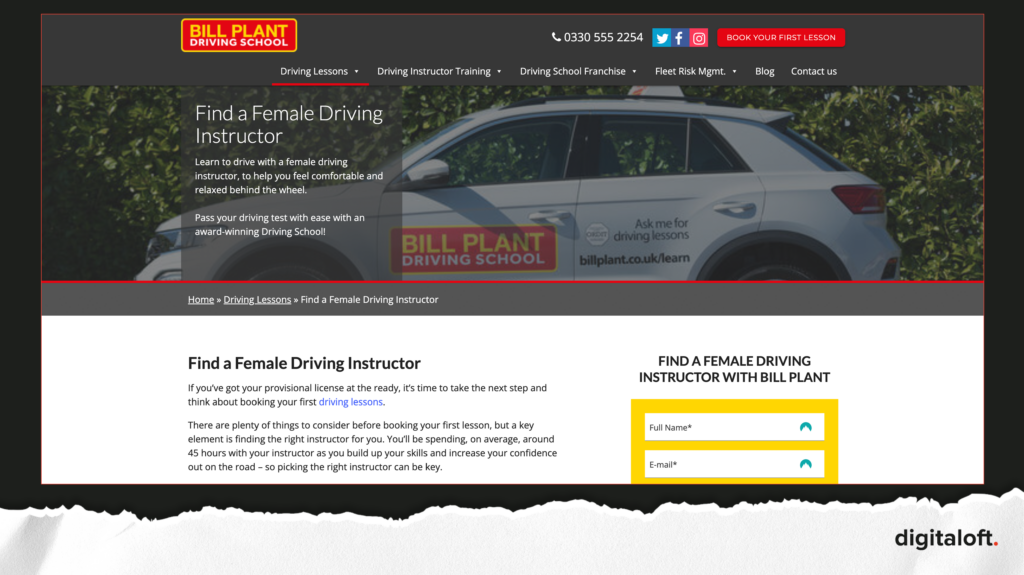
We operate very much with the mindset that a page can’t start to rank (remembering that this takes time, most sites won’t see a new page rank well for a number of months) until it’s launched, and closing these keyword gaps became a high priority.
Keep reading to see how these pages, and more, performed following their launch.
Content, Content & More Content
There’s no ignoring the fact that content is one of the main growth drivers in SEO, and it’s becoming more important than ever for brands to put in the effort that’s required to publish content that is regarded as genuinely helpful by its audience.
At Digitaloft, content becomes one of the main levers we pull to deliver consistent growth once we’ve cleaned up technical and on-page quick wins and high-priority roadmap items.
You’ve already learned about how we closed commercial-intent keyword gaps, but another key driver of success for this project was the production of engaging informational content, published on the site’s blog.
And to us, this very much meant an ongoing content strategy that saw us work to build topical authority around key areas in which we were looking to drive growth, at all stages of the funnel.
Looking right across the full funnel means we’re reaching potential learners or driving instructors right from when they start carrying out research through to when they’re ready to book.
Example content that we launched to support the franchise’s driving instructor training courses sat around the service’s pillar page:
Ultimately, our goal here was to build out a comprehensive topic cluster covering all the topics and questions commonly asked by those considering training to become a driving instructor. As much as we used keyword research to determine the topics for the content, some of the best-performing pieces came from understanding the questions the franchise’s sales team were being asked.
This is just an example of one topic cluster; the driving instructor training course one. We built out additional content around each of the key topic clusters we’d defined in our early strategy phase.
A full-funnel content strategy is, in our minds, essential to SEO success. But it’s important to think about this as meaning so much more than ‘just blog posts.’
Instead, think about your content strategy as a way to get in front of your target audience at different stages of their purchase journey; that will typically mean a mix of informational content (top of the funnel) through to product or service pages (bottom of the funnel).
But what content also does is demonstrate your experts’ knowledge, experience and insights. And this is something Google continues to reward.
This isn’t about creating content for search engines, though. A solid strategy considers your audience first and foremost and optimises that content to be found via search engines. This means writing the content that your audience wants to consume; and thinking beyond just search volume.
In this case, this meant creating content that helped both those considering becoming a driving instructor and learners. By demonstrating Bill Plant Driving Schools’ expertise through helpful content, this has helped them to ride the wave of algorithm updates without dropping visibility and earn valuable rankings for key terms, backed up by a solid content strategy that demonstrates why the site deserves to rank.
Better Internal Linking
When working on a content-heavy SEO strategy, which many of those that Digitaloft works on are, it’s absolutely essential to have a solid internal linking framework in place.
In fact, it’s safe to say that internal linking improvements remain one of the most impactful quick-win tactics that we can leverage.
And in the case of Bill Plant Driving School, there were a number of issues with the site’s internal linking structure when we first began working on the site. These included:
- A lack of internal linking between informational / blog content and service pages
- A lack of internal linking between location pages and their suburb pages
- A lack of internal linking from within service page content to other relevant service / informational pages
- Internal links using the wrong / weak anchor text
- Missing key pages from the site’s main navigation menu
We completely reworked the site’s internal linking structure, with key actions being to significantly improve the linking between relevant content across the site to demonstrate the contextual relationship between pages.
Whilst there’s no ignoring that internal links pass PageRank (yes, this is still something Google uses, they just don’t report on it), we must also remember that they help demonstrate the topical connection between two pages and help users to navigate to other pages.
Once we’d reworked the site’s internal linking structure, we rolled out guidelines for our content team for internally linking within new content; looking at key pages and the relevant anchor text we should be using.
Digital PR-Powered Link Acquisition
We needed to build Bill Plant Driving School’s authority off-page as well as on-page, and our tactic of choice for doing this was digital PR.

Over the course of two years, we increased Bill Plant’s referring domains by 339; from 555 to 894.
And whilst this averages out at 14 new referring domains each month, the key factor here was our focus on relevancy.
We’re big believers that digital PR is a fantastic opportunity to earn relevant links from authority publications, and that means earning coverage that’s relevant to the brand and its audience.
Our digital PR strategy saw us combine both data-driven reports with both reactive and proactive expert insights, maintaining consistent coverage in the press across the key topic of learning to drive.
Here’s an example of one of our data-driven campaigns, The Driving Test Index, which saw us analyse data for test centres across the UK, revealing the regions with the shortest wait times and highest pass rates.
Coming out of the back of the pandemic, when driving test centres saw a huge backlog, this created the perfect narrative to place Bill Plant Driving School at the heart of an important topic; how long it would take to get a test booked.
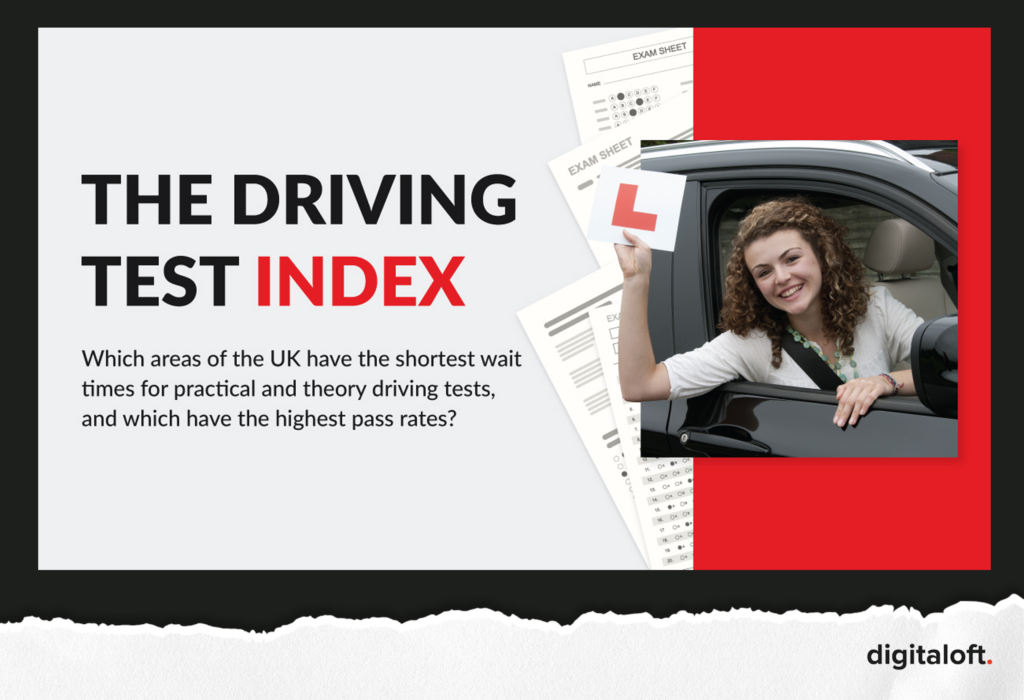
Alongside data-driven reports, our PR specialists placed a strong focus on pitching out tips and commentary from the franchise’s experts to land relevant coverage (and links).
Expert insights is a great way to maintain relevancy, whilst demonstrating expertise and experience and, ultimately, adding value to a publication’s readers.
Here’s a snapshot of some of the coverage we earned, pitching standout stories around the key topic of learning to drive, which helped to maintain a focus on earning the most relevant links possible, alongside coverage that put the driving school in front of their key target audience, with an emphasis put on leveraging local press in priority areas.
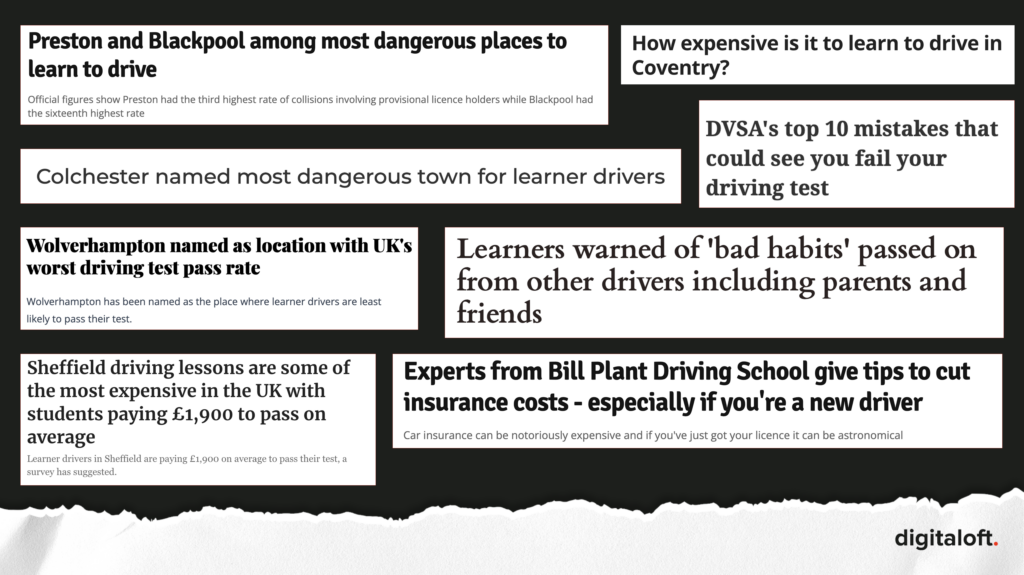
The Results.
Having worked with Bill Plant Driving School for two years, we’re in a position to show how our SEO strategy consistently impacted the franchise’s organic growth.
Comparing the period of 1st October 2022 to 30th September 2023 with the previous period of 1st October 2021 to 30th September 2022, we can showcase a significant Year-on-year growth.
Looking back further doesn’t give a true representation of the market due to lockdowns and driving lessons and tests being paused.
Across this period, Digitaloft achieved a 67% increase in organic sessions and a 44% increase in organic conversions for the franchise.
However, we’re big believers that sitewide stats usually don’t tell the full story, so here’s a breakdown of some of the campaign’s successes at a more granular level:
- A 250% increase in organic sessions and a 290% increase in leads for driving instructor training courses
- A 140% increase in organic sessions and a 150% increase in leads for intensive driving courses
- 6,000 organic sessions with a 21% enquiry rate from the site’s newly launched ‘automatic driving lessons’ pages
- A 68% increase in organic sessions and a 72% increase in driving lesson leads for the franchise’s local instructor network
- A 308% increase in organic sessions to the site’s blog and a 260% increase in leads generated by this informational content (+145,000 sessions)
- 1,150 keywords ranking in top 3 positions and 3,680 keywords ranking in top 10 positions
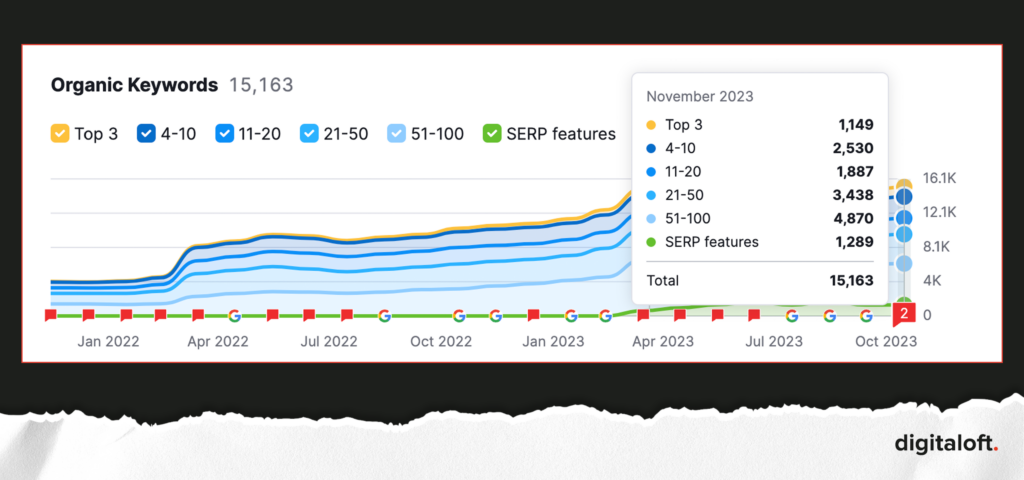
As well as earning, increasing and maintaining prominent organic rankings for commercial-intent keywords (where the searcher is looking for a driving school or driving instructor training course) and pages, our strategy has had a significant impact on the site’s top of the funnel visibility (where the searcher is looking for information), primarily as a result of the blog and guide content we launched.
Here’s a few examples, using our ‘driving instructor training’ topic cluster to show how we’ve earned visibility right across the funnel…
Ranked #1 for ‘how much do driving instructors earn?’
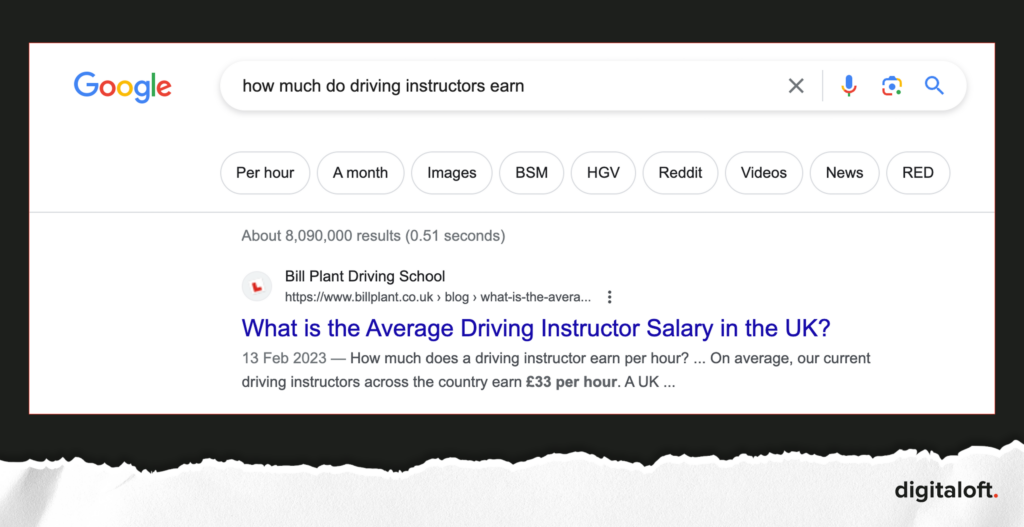
Ranked #1 for ‘how long does it take to become a driving instructor?’
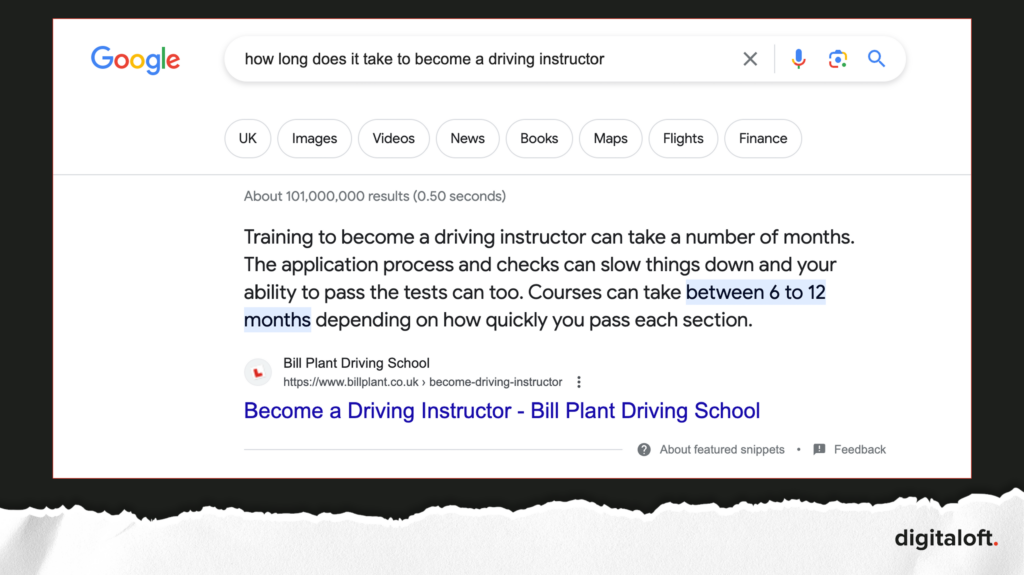
Ranked #3 for ‘driving instructor training courses’ (top non-government result)

Whether an individual is just beginning their research into becoming a driving instructor (searching for answers to questions like ‘how much do driving instructors earn?’ and ‘how long does it take to become a driving instructor?’) or is considering the available training options (searching for keywords like ‘driving instructor training courses’), our strategy has ensured that Bill Plant Driving School is visible.
By increasing visibility from the top of the funnel down, the impact of this example is that we’ve been able to keep Bill Plant’s pipeline full; putting them in front of their future franchisees from the moment they start considering becoming a driving instructor right the way through to the moment they’re ready to book their course and beyond.
Further evidence of this comes from looking at the wider growth in the site’s blog visibility and traffic. If we break down performance over the last 16 months, using data from Google Search Console to back this up, we can see:

Bill Plant Driving School’s SEO success perfectly demonstrates the need to understand your audience and how they’re searching. Our strategy for the franchise has involved increasing visibility across local-intent, commercial-intent and informational-intent keywords, using the tactics necessary to achieve this.
Only when you know how people search can you put together a strategy to help you get in front of them, otherwise, you’re optimising blind…
"Thank you for all the work that you've carried out over the last two years and the fantastic results we've experienced, but also for all the effort the team made to help educate me and the business at the same time."

"This has been a truly collaborative project, spanning SEO, content and digital PR, alongside Bill Plant Driving School's in-house team - with each contingent being pivotal to the success we've seen. The Digitaloft team demonstrated their ability to pivot on strategies to suit developing business needs, all culminating in Bill Plant Driving School dominating the SERPs for driving lessons and driving instructor training."

Want the results other agencies promised but never delivered?
Schedule a FREE 30 min strategy session with one of our specialists & learn how we can help you increase your traffic and revenue with SEO, content marketing and digital PR.










